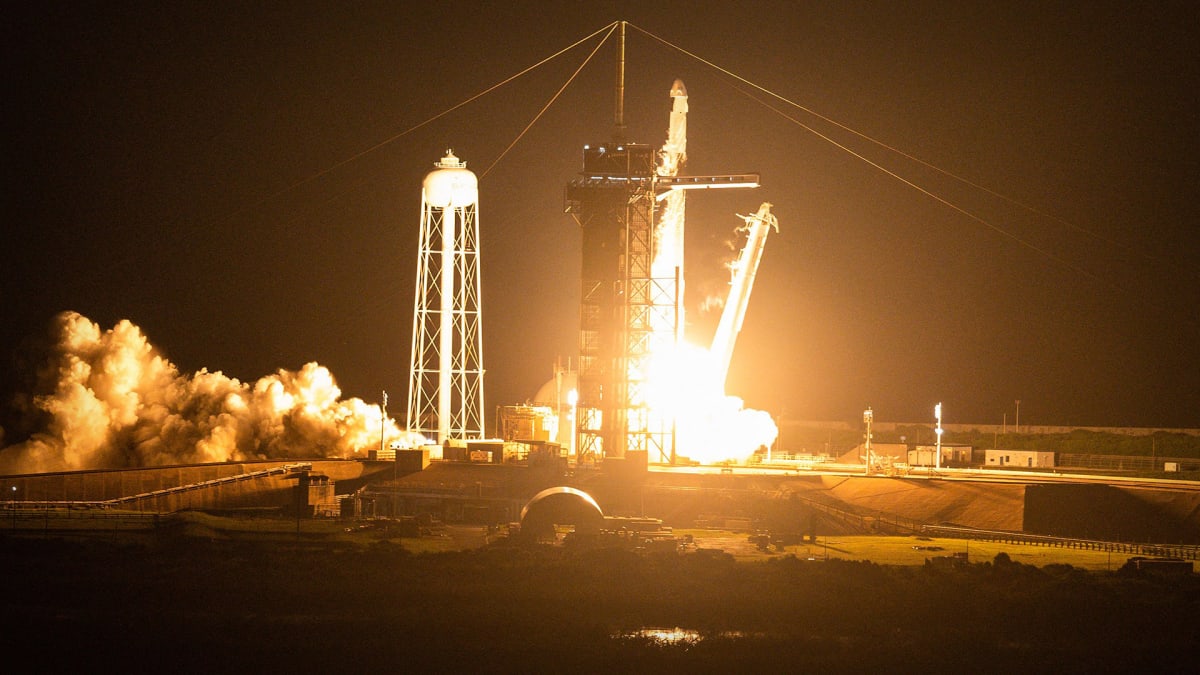
Elon Musk is getting a little closer to his dream -- the one that he has made global.
To conquer Mars, the red planet.
He has promised that plenty of us will see Mars conquered. "Humanity will reach Mars in your lifetime," the tech mogul said last July.
Too ambitious, mad, unrealistic: Such are the reactions that accompanied this promise. The billionaire CEO of Tesla (TSLA), known for his whimsical side, continues to hammer away at the idea that it is possible.
'Near End of Third Week of April'
He has just announced that SpaceX, his aerospace company, is almost ready for the maiden flight of Starship, the massive rocket at the center of his quest for conquest.
"SpaceX will be ready to launch Starship in a few weeks," Musk said on March 17. He added that the exact timing of the launch depends on the Federal Aviation Administration approving a license.
Musk does not doubt that SpaceX will obtain clearance from the air and space regulator, since he has already estimated the timing.
"Assuming that takes a few weeks, first launch attempt will be near end of third week of April, aka …" Musk said.
"The FAA will make a license determination only after the agency is satisfied SpaceX meets all licensing, safety and other regulatory requirements," a spokesperson said in a an emailed statement.
The agency had given Musk's company a hard time testing the spacecraft last summer, filing no fewer than 75 points of remarks and corrections to be made to limit the environmental impact of the giant rocket.
Musk's optimism contrasts with his pessimism in early March. Just a few days ago the billionaire said Starship had only a 50-50 chance of achieving its objective on the first try. That probability would rise to 80% by year's end, he estimated. His caution made sense to experts, given the high failure rate when new spacecraft are launched.
The orbital launch of Starship is supposed to represent a great leap forward for humanity by offering a super-heavy machine capable of reaching the moon, then Mars, while carrying tons of cargo.
A 90-Minute Flight
Starship, a next-generation rocket, refers to the space-transport vehicle and the upper stage of the launcher. The main stage -- that is, the booster needed to launch the Starship -- is called "Super Heavy."
This future reusable transport system will carry both cargo and people. It is designed to quickly replace the entire current range of SpaceX launchers and separate freight and manned transport systems. These are the Falcon Heavy and the Falcon 9, used for launching satellites, refueling the International Space Station, and rotating crews.
The Starship, which will become the most powerful rocket ever launched when it lifts off, will one day carry astronauts and supplies to the moon and possibly Mars.
SpaceX has tested the second-stage Starship spacecraft, but only on high-altitude flights rather than in orbit. The Super Heavy, on the other hand, has yet to fly.
The maiden launch promises to be a spectacular sight as the Super Heavy's 33 Raptor engines propel the vehicle skyward. Just three minutes into the test flight, the Starship will separate from the Super Heavy on a mission that is expected to last about 90 minutes.
Successful testing of the spacecraft will pave the way for NASA to use a modified version of the Starship spacecraft to land the first woman and first person of color on the lunar surface, a mission that will take place no sooner than 2025.
The vehicle could also be deployed to ferry supplies to the moon to help build NASA's proposed moon base. NASA is currently targeting the late 2030s for the first astronaut mission to Mars.







